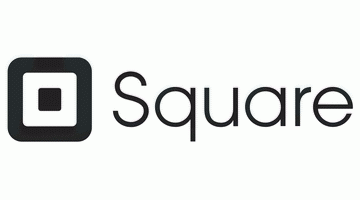Updated on November 22, 2021
There’s no doubt that the post-COVID-19 era would be spectacular. We can expect that in 2022, roads and trains will begin to fill with life as people travel back and forth without the sense of gloom and depredation hanging over their heads. High street retailers and restaurants will also start catering to live audiences. By 2022, the months (and years) of physical distancing will give way to life as it used to be, or would it ever really be the same?
This article looks at how far we’ve come since the global pandemic that shook the world like never before. By reflecting on the months past, we can reflect on some aspects of the future, mainly e-commerce, payments and credit card processing in 2022.
New Consumer Expectations and Behavior
The COVID-19 and its demand for physical distancing transformed every aspect of our existence, including consumer behavior in a way like never seen before.
Before now, online shopping was a habit reserved for Gen Z and Millenials.

At first, consumers faced a shortage of goods and frustrating checkout experiences. But big-box retailers quickly made improvements to overcome the new challenges of the market. Even retail sectors such as groceries that had been previously resilient to the transition have signed up with e-commerce platforms.
Interconnected physical and digital worlds
The increase in online shopping also paved the way for more exciting challenges for merchants. Naturally, more consumers online meant a more fantastic opportunity to boost their revenue. But it equally meant that there was more competition because consumers now add real-time access to every type of business on the planet. This increased access means consumers could no longer tolerate any company that could not offer intuitive and easy to use websites and apps.
So winning now means the ability to pay attention to consumer’s needs and design better user experiences. The drive for better connections with consumers now demands that businesses develop solutions to connect the online and offline worlds.
So, Brick-and-mortar businesses became dark rooms for click-and-collect points or showrooms. There is also an accelerated investment in virtual and augmented technologies alongside other technologies that bridge the digital and offline worlds. Overall, the best merchant accounts in 2022 must deliver the best of the two worlds to expand their reach and build a loyal consumer base.
Globalization and Local Credit card processing in 2022
Perhaps, one of the most critical parts of that physical, digital connection would be the checkout and payment experience. In truth, experts state that this is the decisive factor that could make or break a conversion.
So, even as consumers now look beyond their geography for goods and services, for better prices, product quality and availability, ‘how they can pay’ also influences their decisions.
Therefore payment news is dominated by thought pieces on bigger challenges regarding payment preferences. Like the dynamic nature of culture, credit card processing in 2022 will vary from one country to the next.
This might come as a surprise, but several studies show that we cannot pay for all e-commerce with the most major credit cards. In truth, more studies show that no payment method or merchant has overwhelming preference over the next. Sure, platforms like PayPal, WeChat Pay, GrabPay, and Alipay seem to have large global market shares. But detailed analysis shows that over 450 local payment methods power 70% of the worldwide e-commerce.
Although customers choose digital payment methods over traditional cash and card payment, they are sticking to the familiar. This is because of the increased fear of fraud. So consumers don’t want to transact with payment methods that are unfamiliar to their location. Therefore, the winning merchants must offer diverse local payment methods to reach and convert a wide range of consumers across boundaries.
The Contactless Norm
As said earlier, traditional cash and card payments are fast becoming ancient practices. But of all digital payment avenues, contactless payments are seriously hitting off. These methods include QR codes, bank transfers, pay by invoice, prepaid cards, mobile e-wallets and cryptocurrencies. Before now, many retailers, especially in the US, resisted installing contactless technology due to processing fees, but the COVID-19 has made it a necessity. In eight countries, a survey by Visa in March 2021 shows that nearly half of consumers now use contactless payments. Another 47% will not shop at an outlet if it doesn’t offer a contactless way to pay.
Of course, health and safety concerns are driving this trend. However, experts also say that the speed, convenience and security of digital payment methods mean that contactless will dominate the scene in 2022.
Again, the COVID-19 and shopping online have paved the way for installment payment methods such as Afterpay and Klarna. These systems allow consumers to “buy now, pay later” by deferring payments while still accessing the goods and services they need. This trend isn’t new but was primarily used by the younger demographics before the pandemic to break up payment for travel, luxury goods and big-ticket items.
Still, it should be noted that markets that already had low cash use before the pandemic, such as Asia, Western Europe, the US and the UK, will remain predominantly digital in 2022.
However, there are still many parts of the world where cash-based payment methods remain popular such as Latin America and Africa. These regions have higher percentages of unbanked consumers. Nevertheless, it is beyond doubt that we will be closer to an entirely cashless society by 2022.
Concluding Thoughts
Before the pandemic, it was expected that e-commerce and local payment methods would increase. But the pandemic caused an explosion of Fintech, local payment methods and product functionalities. Now more than ever, gaining the competitive edge means delivering an easier-to-use, integrated, secure and convenient consumer experience. Again, it is pretty clear that the checkout experience will remain the decisive factor when determining whether to shop with an online retailer.
But even with the competition, there’s a growing need for collaboration and cooperation. Payment news is now filled with publications about rivals joining forces to develop simple solutions to the needs of consumers in times of the pandemic. This is why ‘coopetition’ is the new norm and will accelerate complex advancements in payments and credit card processing in 2022.
Overall, even as the pandemic reined havoc on the global economy, e-commerce has become a powerful force for goods. Consumers now have new and better ways to shop. In turn, all retailers can now access larger and international audiences with better competitive opportunities.
Atributes:


